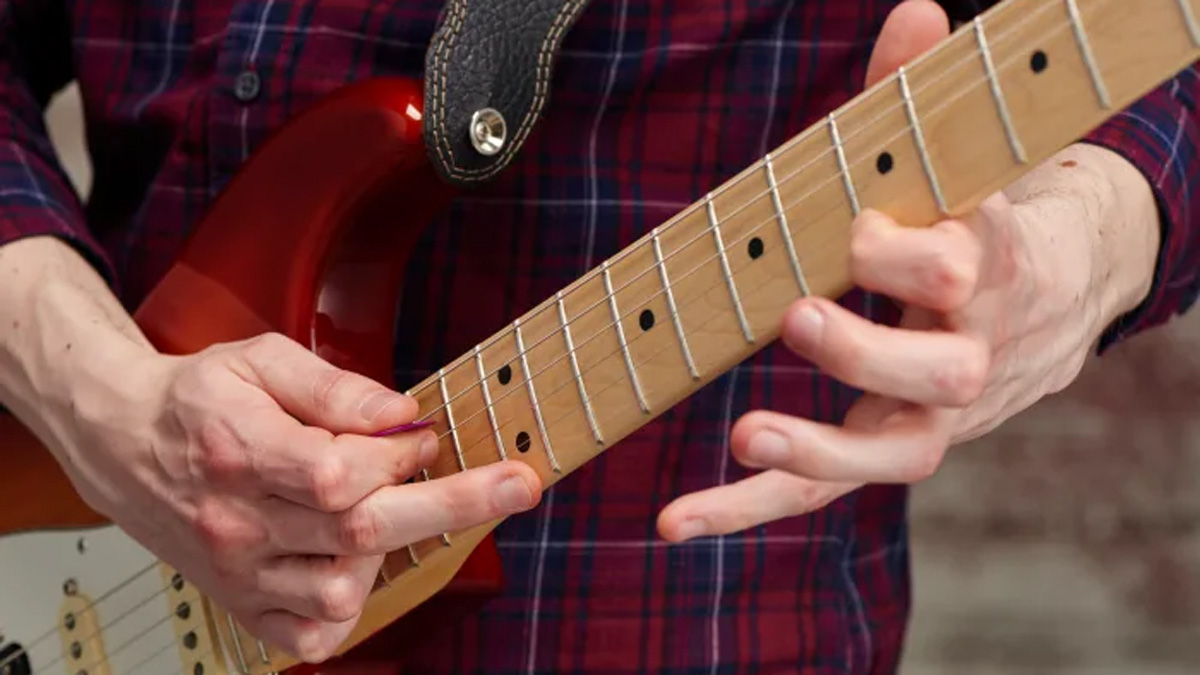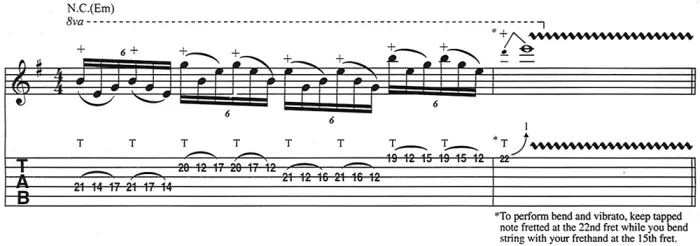Five Amazing Tapping Licks You Can Learn Right Now
Two-hand tapping made easy with these easy-to-learn examples.

Whether you’re just starting out or already have a little tapping experience, these five licks will add some flash to your playing.
Whether you’re just starting out or already have a little tapping experience, these five licks will add some flash to your playing and impress your friends and fans.
#1: Innovative rock guitarists like Eddie Van Halen, Randy Rhoads, Steve Vai, Joe Satriani, Paul Gilbert, Nuno Bettencourt, Jennifer Batten and Reb Beach have all played a significant role in the evolution of tapping technique.
Though each of them has their distinct tapping lick vocabulary, many of them cut their teeth on a passage similar to this first example, a Van Halen–inspired arpeggio pattern of tapped triplets.

#2: With tapping technique, dramatic intervallic patterns can be created by simply varying the spacing between your fret hand and tapping finger.
For this next lick, keep your fret hand in a fixed position at the 12th fret while your tapping finger explores different note options in the higher fretting regions. To raise eyebrows, unleash this lick at the tail end of your favorite E minor pentatonic blues phrase.

#3: With a little advance planning, tapped arpeggio patterns can be transferred to adjacent strings to create monstrous arpeggio licks. The next example takes a popular pattern and moves it across the fretboard to access various Em inversions - different arrangements of E, G and B notes - in a string-skipping format.
After tapping the last note of this phrase, execute the bend by quickly bending from your fret hand (e.g. with the pinkie at the 15th fret). Be sure to keep the tapped note depressed, but help it along with a little bend of its own.

#4: By arranging pentatonic scales into three-notes-per-string shapes, you can create interesting tapping licks that move beyond industry-standard arpeggios.
This next example combines a pair of adjacent E minor pentatonic (E G A B D) positions to create a tap-friendly three-note version of the scale and employs a common tapping pattern to travel the scale’s full range.

#5: Since most tapping patterns are initiated with the tapping finger, it’s fairly simple to shift them from string to string. But to become a true “tap master,” you’ll need to develop the “hammer-on from nowhere” technique - where a note is articulated solely by the force of your fret-hand finger - to switch between strings.
In the following E natural minor (E F# G A B C D) scalar sequence, use a swift hammer-on from your fret hand’s middle or ring finger to kick off each note flurry on strings 2–4.

Get The Pick Newsletter
All the latest guitar news, interviews, lessons, reviews, deals and more, direct to your inbox!
“Write for five minutes a day. I mean, who can’t manage that?” Mike Stern's top five guitar tips include one simple fix to help you develop your personal guitar style
"It’s like you’re making a statement. And you never know where it’ll lead." Pete Thorn shares the tip that convinced Joe Satriani he was the right guitarist for the SatchVai Band










